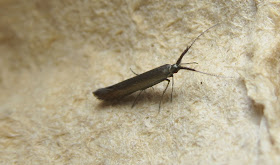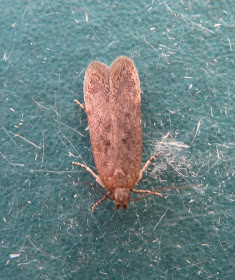Hi all
Six months on and the blog has passed 31,000 page views. Of these, nearly 24,000 have been from within the UK but we seem to have a significant audience overseas too (for example, nearly 4,000 page views from the USA, nearly 700 from China and over 400 from the Ukraine!).
Things seem to be going reasonably well too: plenty of ID requests, as you'd expect, and most are getting answers. I'd like to see more reports of what people are actually seeing too, although it is appreciated that those of you with day jobs probably have your work cut out finding time to identify your own catches at this time of year, let alone passing on information to others!
At least one person who has signed up to the blog has had difficulty uploading messages and comments. If this also applies to you, please don't give up but get in touch and we'll try to resolve things.
It is worth reminding everyone of the need to keep RECORDS for your County Moth Recorder. These should be passed on annually towards the end of the season. Remember to use the correct Determiner, for example if moths are identified on this Blog by a third party. Those of you using bespoke recording software such as MapMate will probably know already how to transfer your data. If not, or if you are using a simple spread-sheet like Excel, then please contact your CMR to ask them how they would like the data to be presented. The minimum requirements will be:
Date
Species name
Life stage (egg, larva, pupa or adult)
Number seen (use a zero to indicate "present" if you don't count)
Location (name of site eg "Westcott, Burnham Road" and a six-digit Ordnance Survey
grid reference eg "SP 715171")
Recorder's name
Determiner's name (if the record was verified by someone else)
Your County Moth Recorders are:
Vice-County 22, Berkshire
Martin Harvey (all species) e-mail: kitenetter at googlemail.com
Vice-County 23, Oxfordshire
Martin Townsend (macro moths) e-mail: martin.townsend4 at ntlworld.com
Martin Corley (micro moths) e-mail: martin.corley at btinternet.com
Vice-County 24, Buckinghamshire
Martin Albertini (all species) e-mail: malbertini at onetel.com
For those of you who don't understand Vice-Counties, I'm sure Mr Google will help! Basically, for consistency in biological recording we continue to use the old county boundaries as they were prior to the changes of the 1960s. This means, for example, that Slough is in VC 24 Bucks while much of present day Oxfordshire south of the Thames is in VC 22 Berkshire. If you have any doubt which Vice-County you are in, just ask!
Dave Wilton
Pages
▼
Monday, 30 June 2014
Last request of the day/month
Two micros and that's it. I think that the one above is Crassa unitella but the one below has me foxed after veering between pinky Celyphas (the image has a pinkish tone to me but it may be the camera) and grey Clothes moths, the sublime to the gorblimey. And then there are the Swammerdamias which hold their antennae in the same way in the amazing Lewington pics but they seem to have the wrong 'noses'. So if one of the Wise Men can answer the question, I would again be very grateful. But now I will go and have tea. Martin Wainwright, Thrupp, Oxon.
Once more unto the breach...
Micro for identification
The micro below has defeated me, so help would be much appreciated. The forewing length is 13mm, and I include 2 photos, one from above and one from the side.
Steve Trigg, Cookham
Steve Trigg, Cookham
Micro ID please
This was photographed in a hedge near Little Marlow gravel pit, Bucks on 29 June. It was the size and shape of Celypha lacunana but lacked the characteristic fingers and was a different colour to the ones I've seen. Is this another example of the interesting but annoying variability within a moth species?
Two more macros
Small and pale
Sunday, 29 June 2014
Little grey jobs (and one not at all grey)
Quieter again last night in Wolvercote, Oxon, but a few quite nice individuals, including our first Bordered Beauty of the year, and a tricky pair of related individuals - but not, I think, the same species: I'm calling the first one as a Poplar Grey, the second a Sycamore, partly because it's paler and partly because it looks rather like a photo I took of an individual almost exactly a year ago, on 29th June 2013. Does that sound about right? Steve and Xander Goddard.
 |
| Bordered Beauty, 28/6/14 |
 |
| Possible Poplar Grey, 28/6/14 |
 |
| Possible Sycamore, 28/6/14 |
Mellow yellow
A break from my ID query marathon to rejoice in the Barred Yellow above and female Drinker below which shared the Robinson trap with a good number of other species including an extremely handsome Broad-bordered Yellow Underwing and the first Spectacle I've seen since the earlier brood back in May and a Grey Dagger, whose predecessors this year came even longer ago. Martin Wainwright, Thrupp, Oxon
And a few tricky micros
There were a few dubious micros in the catch of the 26th in Wolvercote: a rather worn individual which I think may have been Archips xylosteana; a possible Phyllonorycter leucographella; and a complete mystery of a micro - as ever, all confirmations/suggestions very welcome. Steve and Xander Goddard.
 |
| Possible Archips xylosteana, 26/6/14 |
 |
| Possible Phyllonorycter leucographella, 26/6/14 |
 |
| No idea, but it looks as though it might be identifiable, 26/6/14 |
More of the same
Carrying on with the theme of picking up species Adam Hartley got to first, we had our first ever Toadflax Brocade in the trap in Wolvercote, Oxon, on the 26th: which is nice, because I remember wishing we could have one when Adam got his. We also had a Clay and a Blackneck, as Martin has had in Thrupp recently; and last night, although the trap was a devil to empty in torrential rain, we found a rather nice Anania coronata, which is a garden first. Steve and Xander Goddard.
 |
| Blackneck, 26/6/14 |
 |
| Clay, 26/6/14 |
 |
| Anania coronata, 27/6/14 |
.JPG) |
| Toadflax Brocade, 26/6/14 |
Saturday, 28 June 2014
Something for the weekend
In case any of our teachers have a dull moment tonight or tomorrow, here are two particularly challenging members of my backlog. The second one had been drowned for some time, so may be beyond anyone's ken, in which case many apologies. My best guesses are - above - a melanic Juniper Pug and - below - well, maybe one of the smaller waves. Many thanks in anticipation for all help, and again for the ones cracked earlier today. Martin Wainwright, Thrupp, Oxon
Westcott, Bucks
Two interesting moths appeared in the garden trap here last night. Amongst all the Marbled Minors was a smart Minor Shoulder-knot, a species I seem to get at least one of annually even though it is really more of a damp woodland specialist locally. The other was my second Reddish Light Arches of the year, well away from its expected habitat on the chalk. I suppose this is what makes light trapping so much fun - you never know what is going to turn up! New for the year last night were examples of Acleris forsskaleana, Single-dotted Wave, Small Fan-footed Wave & Common/Lesser Common Rustic (which will need closer examination to confirm the species). The Heart and Dart tally reached 135 which takes me past 1,000 individuals already for 2014. The species seems to have bounced back very well after last year's disappointing garden total of 617 for the entire season. Dave Wilton
 |
| Minor Shoulder-knot, Westcott 27th June |
 |
| Reddish Light Arches, Westcott 27th June |
Loosley Row, Bucks
65 species to the trap last night. New for the year were: Coronet, Udea prunalis, Swallow-tailed, Dingy Footman, Green Pug, Dun-bar, Broad-barred White, Large Emerald, Scarce footman, Phycitodes binaevella, Shaded Broad-bar, Hedya nubiferana, Short-cloaked, Green Arches, Common Footman, Platyptilia pallidactyla and Euzophera pinguis.
Nigel
Nigel
Hornet exuvia
My only luck so far this year in finding the Hornet moth has been just a quick sighting of one flying around a Black Poplar in the yard at `Dayla`, Aston Clinton, but i couldn't get a picture. I've found 5 pupal shells (exuviae) sticking out of the exit holes at the base of Poplars, 3 at Broughton and 2 at Aston Clinton, but the moths have eluded me so far! Dave Maunder
 |
| Exuvia, and plenty of exit holes from previous years |
Muslin Footmen?
Culmella?
While posting, I thought I might add the latest class picture from the Emperor School. Martin Wainwright, Thrupp, Oxon
Spooky
My first Ghost moths of the year this morning here at Thrupp, Oxon,, the female humuli humuli nestled into an eggbox cone in the Robinson trap (an very nearly overlooked as the morning tea kettle boiled over) and the male on a carpet indoors where Penny discovered (and nearly trod) on it.
They gave me Swiftian thoughts about another arrival this morning which I haven't yet sussed, on account of its distinctive resting position and sharply angled wings (below). Sorry to breach the two pics rule but I thought both views would help ID, which would be much appreciated as always. Sorry not to get such a distinctive creature - and I'm afraid more dilemmas in search of a solution are to come shortly. Martin Wainwright
Friday, 27 June 2014
Micros - how am I doing?
I am making more of an effort this year to identify the micros that appear in my trap. Just catching them and getting them to stay still seems to be a challenge, let alone identifying and photographing them! However, here are some that I think I have managed to recognise. As ever, confirmation would be very welcome.
The first I think is Eucosma cana (fw 9mm).
The second is Batia lunaris (fw 5mm).
Next is Archips xylosteana (fw 8mm).
The first I think is Eucosma cana (fw 9mm).
The second is Batia lunaris (fw 5mm).
Next is Archips xylosteana (fw 8mm).
And I believe this is Ancylis achatana (fw 9mm).
Finally, after much studying of the Common Micro-moths of Berkshire book, I believe this is Eudonia lacustrata (fw 8mm) rather than mercurella.
Steve Trigg, Cookham




































